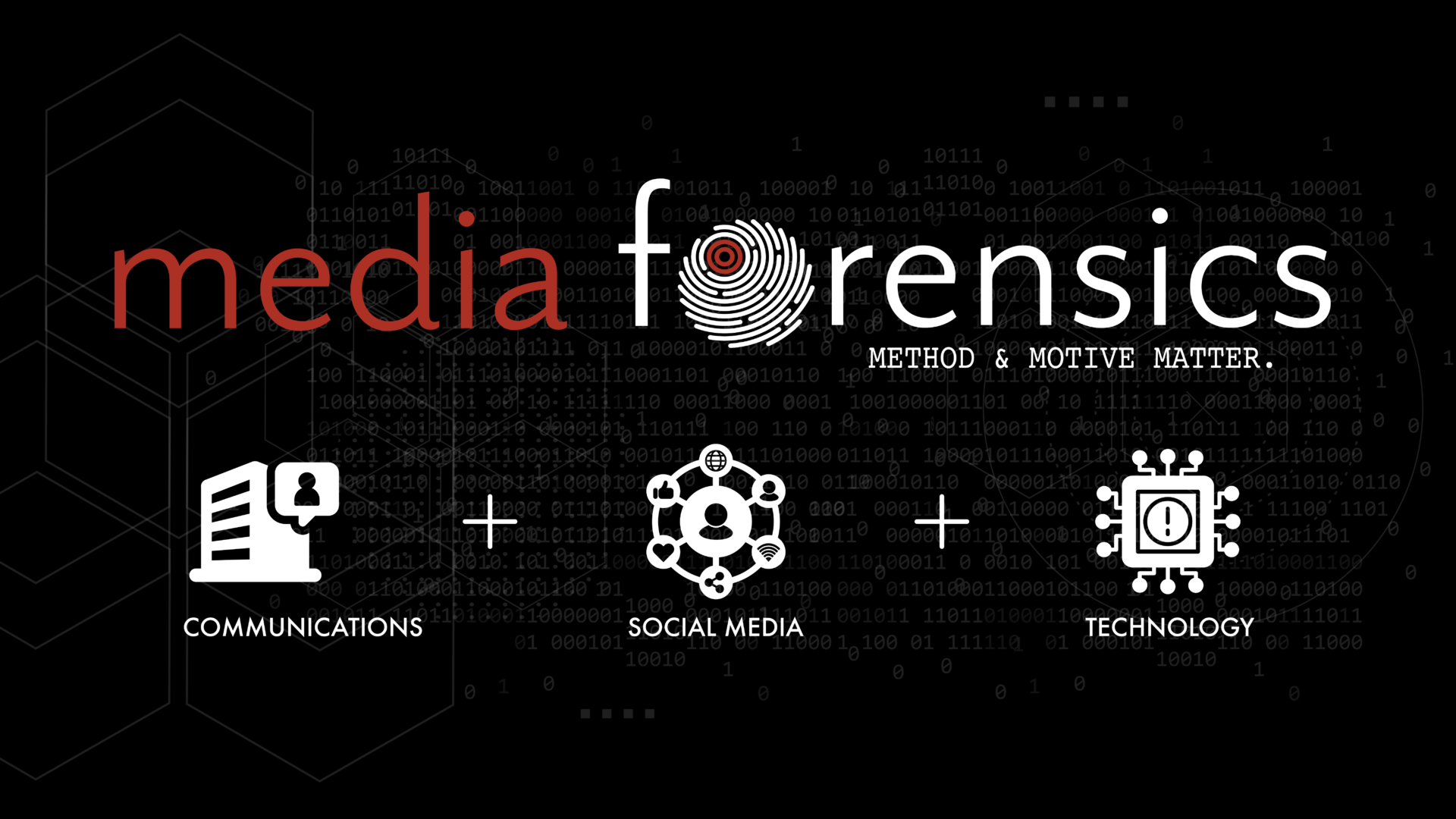Why Method and Motive Matter.
The methodology of Media forensics borrows from the criminal investigative approach to determine the Motive and Method behind any given crisis or issue. Until the reasons (motive) behind an event are understood, along with what tools, practices and technologies (method) are being used to support it, any crisis or issue will be falsely addressed.
To switch metaphors, traditional approaches to crisis mitigation employ stethoscopes in pursuit of a problem; media forensics employs an x-ray.

A random troll on Twitter is dramatically different than a person who is part of a mobilized group on the deep web intending to create widespread disinformation. Or, less dramatically, one person making a joke at your expense—using the language of memes and sarcasim of social—may not warrant a defensive action. This is largely a human assessment based on gathered intelligence and can not be determined through automated sentiment-analysis. This information is vital to helping you determine how—or more importantly if—to respond.
Media Forensics determines the motive by developing character profiles of key players involved during an event, based upon those individuals’ past content and behavior, and current connections, affiliations and associations with known groups.
Media Forensics partners with experts in the field of online risk intelligence, detection monitoring, AI analysis and deeper web awareness to identify the motive(s) occurring behind the scenes of any event.

Prior to around 2016, information flow was relatively static, transparent and traceable. Today, bots, algorithms, the deep web, AI, fringe networks, fake identities and manipulated visuals make it much more difficult to trace where information starts, how it was created and by whom and why. Today’s standard “monitoring” technologies are grossly outmatched in trying to identify the origins, pathways, players and motivations of a given mobilization. Current market tools were designed for how social media functioned in 2015, not how it does today (though many are working hard to get up-to-date). As such, it is virtually impossible to develop an effective business or communications strategy: the insights derived solely from “monitoring tools” are inaccurate, incomplete or both. Investigating the methods used for communications during a crisis requires not only the use of standard monitoring tools, but human analysis into forums and platforms online that are not included in the off-the-shelf monitoring tools.

Brands are now considered to be “living” within the culture in which they function. As such, they must be acutely aware of the cultural scenery around them, well above and beyond the products they sell: from Covid-19 conspiracy theories to election fraud to gun-advocacy to the #metoo movement, toxic-masculinity, climate change—a dynamic and fluid list of topics that matter to society from day to day. Understanding this context during crisis mitigation is vital to success—what are people talking about and caring about today and how will that impact how our messages are received?
Amidst this new and complex ecosystem, organizations need a more sophisticated defense: that defense is Media Forensics.
